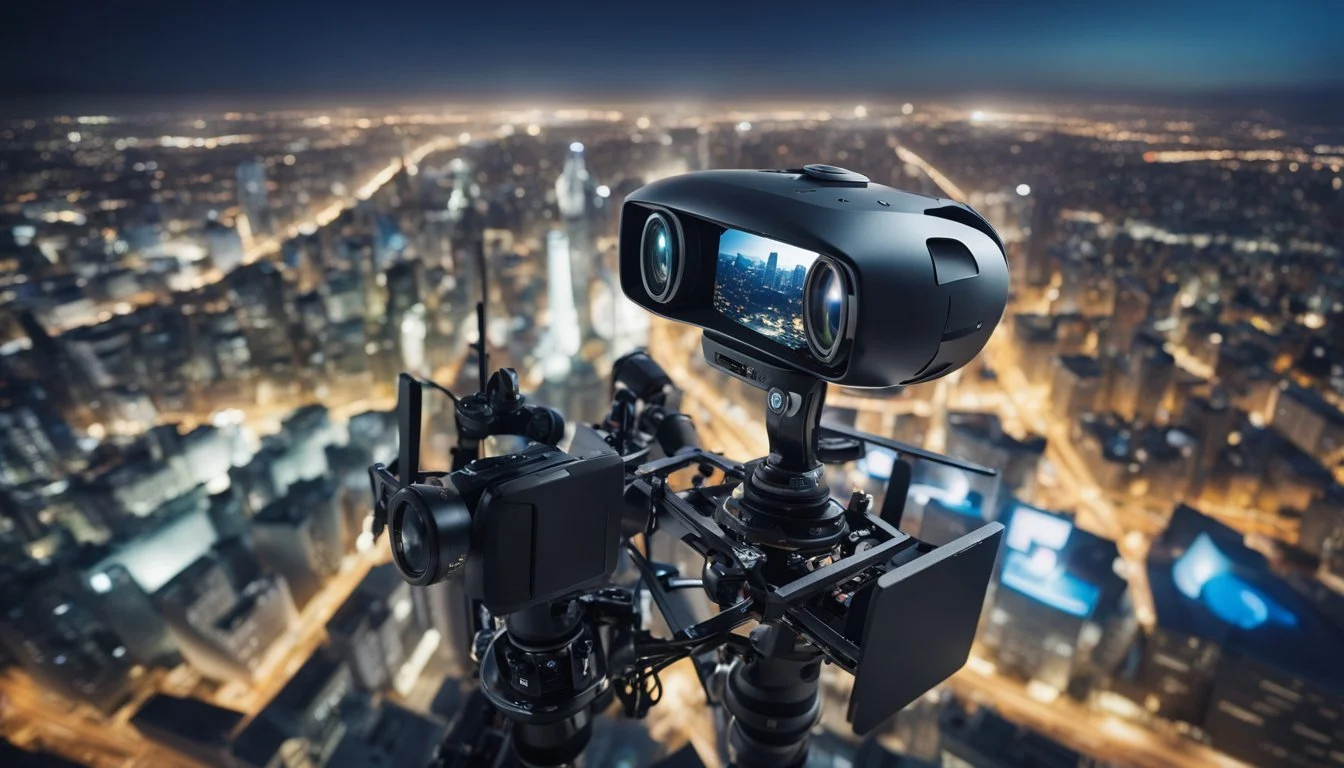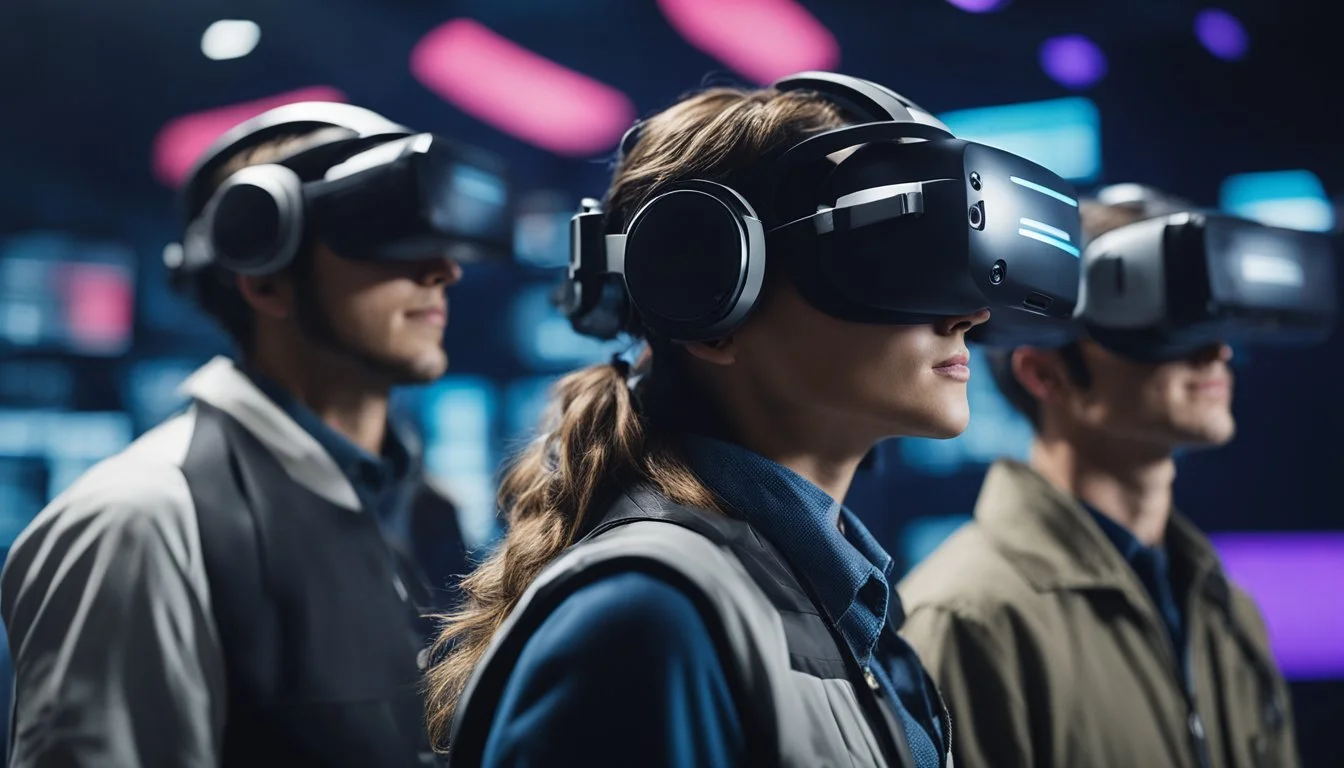5 Innovative Ways to Incorporate Virtual Reality into Your Films for a Cutting-Edge Experience
Virtual reality (VR) is rapidly transforming the landscape of filmmaking, offering unprecedented opportunities for storytelling and audience engagement. Filmmakers are increasingly leveraging VR technology to create immersive experiences that transport viewers into the heart of the story. This evolution is not just a fleeting trend but a significant shift in cinematic techniques.
Understanding how to effectively incorporate VR into films can elevate a director's storytelling capabilities, enhancing both narrative depth and visual impact. As the technology continues to advance, those who master its use will be at the forefront of this cinematic revolution, crafting experiences that resonate on a deeper level with audiences.
1) 360-Degree Storytelling
360-degree storytelling revolutionizes traditional narrative forms by immersing the audience directly into the story. Unlike conventional film, this method allows viewers to explore the environment from all angles, providing a richer, more engaging experience.
Directors use specialized cameras to capture footage in every direction. This creates a seamless spherical view, ensuring the audience feels as though they are inside the scene. The viewer becomes an active participant rather than a passive observer.
Virtual Reality (VR) headsets enhance this experience further. They enable full immersion, where the viewer can look around and interact with the environment. This level of engagement can evoke stronger emotional responses and deeper connections with the narrative.
360-degree storytelling is particularly effective in genres like documentary and horror. In documentaries, it places the audience directly into real-world scenarios, fostering empathy and understanding. In horror, it heightens tension by placing viewers in unsettling environments where they can’t escape the dread surrounding them.
Advancements in VR technology continue to expand the possibilities of 360-degree storytelling. High-definition resolutions, spatial audio, and responsive interactions contribute to more compelling and realistic experiences, pushing the boundaries of how stories are told and experienced.
For filmmakers, mastering 360-degree storytelling presents unique creative challenges. It requires innovative thinking in terms of narrative structure, camera placement, and viewer engagement techniques. Yet, the potential rewards include unprecedented storytelling depth and audience immersion.
2) Virtual Set Design
Virtual set design allows filmmakers to create immersive, photorealistic environments without the constraints of physical locations. This technology enables the seamless blending of real-world elements with computer-generated backgrounds.
Using advanced software and graphics, virtual sets can replicate real-world or entirely unique locations. Filmmakers can shoot in multiple settings without moving cast or crew, saving time and budget.
Virtual sets are particularly useful for scenes requiring extraordinary or imaginary locales. Through motion capture and chroma keying, actors interact convincingly with their surroundings, enhancing the believability of the scenes.
The flexibility of virtual set design allows for last-minute alterations. Adjustments to lighting, set pieces, and even weather conditions can be made in real-time, ensuring the final product meets the director's vision.
By incorporating virtual sets, filmmakers push creative boundaries. They can experiment with varied stylistic choices, laying out elaborate scenes that would be practically or financially impossible to build physically. This approach enhances visual storytelling.
3) Immersive Acting Workshops
Immersive acting workshops using Virtual Reality (VR) offer a groundbreaking way for actors to hone their skills. By utilizing VR headsets, actors can be placed in a variety of settings, allowing them to practice their craft in environments that feel incredibly real.
These workshops are particularly useful for method actors who need to fully embody their roles. With VR, they can experience the sights and sounds of the scene without having to construct physical sets, saving both time and money.
Directors and acting coaches can also benefit from this technology. They can adjust settings and scenarios on the fly, providing immediate feedback and tailoring the experience to each actor's needs. This flexibility allows for more effective practice sessions.
Engagement is another area where VR shines. Traditional rehearsals can sometimes lack the immersive quality that VR provides. By placing actors directly into the world of the film, VR encourages them to react and adapt as they would in the real scene, resulting in more authentic performances.
Immersive acting workshops leveraging VR technology not only enhance performance but also bridge geographical distances. Actors and coaches can be in different locations yet still feel present within the same virtual environment, making collaboration easier than ever.
4) Real-Time Location Scouting
Virtual reality revolutionizes location scouting for filmmakers. Utilizing real-time graphic engines combined with immersive technologies, directors and producers can explore potential filming sites without leaving their office. This technological advance enables them to evaluate multiple locations efficiently.
They can simulate different times of day and lighting conditions with tools like the Sun Path app. This feature provides insights into how natural light will interact with the setting, crucial for planning shoots accurately.
VR headsets provide an immersive experience, allowing filmmakers to visualize the location in 360 degrees. This detailed view helps in making informed decisions about camera angles and scene setups.
Using VR for location scouting also fosters collaboration. Teams can share their virtual tours and insights remotely, enhancing the decision-making process and saving time and resources.
Virtual reality scouting can also reduce costs. By minimizing the need for physical visits, filmmakers can allocate their budget more effectively. This method becomes especially beneficial during the pre-production phase, streamlining the entire planning process.
5) Interactive Audience Experiences
Incorporating interactive elements in virtual reality films allows audiences to influence the narrative. These immersive experiences create a unique bond between the viewer and the story, making them active participants rather than passive observers.
Viewers can make choices that affect the plot, character actions, or even the ending. This level of interactivity engages the audience on a deeper level, fostering a sense of agency and investment in the storyline.
Directors and producers can use branching storylines that offer various paths based on viewer decisions. This approach enables multiple viewing experiences, encouraging repeat viewings and discussions.
Interactive elements can also include tasks or puzzles that viewers must solve to advance the plot. This method engages the audience's problem-solving skills, creating a more immersive and memorable experience.
Enhancing the film experience with interactive features powered by VR technology ensures viewers feel more connected to the storyline. By allowing them to shape the narrative, filmmakers can deliver a uniquely engaging experience.
Technical Advancements in VR Filmmaking
The field of VR filmmaking has seen significant strides, with cutting-edge camera technologies and evolving storytelling techniques enhancing the viewer's immersive experience.
Latest VR Camera Technologies
Modern VR cameras have advanced remarkably, offering filmmakers a suite of tools for creating immersive content. 360-degree cameras allow for complete spherical capture, giving audiences the sensation of being inside the scene.
Stereoscopic cameras, which capture images for each eye separately, create a realistic depth perception. Devices like the Google Jump and Insta360 Titan provide high-resolution imagery and seamless stitching, critical for avoiding visual distortions.
Real-time preview capabilities on these cameras let directors make immediate adjustments, ensuring perfect shots and reducing post-production time.
Evolution of VR Storytelling Techniques
VR storytelling is evolving, emphasizing interactive and nonlinear narratives that engage viewers more deeply. Techniques like branching storylines allow audiences to influence the plot, creating a personal experience.
Ambient storytelling, where the environment itself conveys narrative elements, enhances immersion. Tools such as Unreal Engine and Unity empower filmmakers to create dynamic virtual worlds.
Viewer agency is a critical focus, where the audience's choices directly impact the story's outcome. This evolution necessitates new scripting and directing approaches, blending traditional and interactive storytelling.
Integrating VR into Traditional Film Production
Virtual Reality (VR) is transforming traditional film production, offering new avenues for merging digital and live-action elements. This fusion enhances planning and on-set experiences, creating immersive storytelling possibilities.
Combining VR and Live-Action Footage
Using VR to mix live-action footage with virtual elements opens new creative horizons for filmmakers. Directors can visualize and adjust scenes in real-time, blending practical effects with digital enhancements seamlessly. This approach ensures that virtual and real components interact naturally, improving the final output’s authenticity.
Actors benefit from understanding their surroundings better. VR setups enable performers to see and interact with virtual characters or environments live, boosting their performance’s realism. This integration leads to more cohesive and believable scenes, captivating audiences more effectively.
Hybrid Production Pipelines
Hybrid production pipelines merge VR tools with traditional filmmaking methods, streamlining the production process. Advanced previsualization through VR allows directors and cinematographers to plan complex shots efficiently. By visualizing scenes in a virtual space, they can experiment with camera angles, lighting setups, and scene compositions before actual filming starts.
Collaboration becomes more intuitive as departments, such as the Virtual Art Department, VFX supervisors, and the director of photography, work together in a shared virtual space. This unity ensures that all elements harmonize, reducing post-production workload and enhancing the overall quality of the film.




